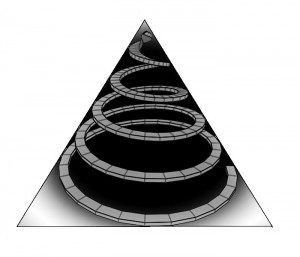Reading Text: Emergence / Steven Johnson
It is rightly said that we are at the highest point of understanding our universe. Our knowledge about this sphere of activity that we are centered on and the totality of all the matter and energy that exists in the vastness is still limited yet we make fun of people who still believes that the earth is the center of the universe. Even thou we don’t have a full understanding of how this system functions and we still cannot prove the hypothesis yet we are quite certain of this conclusion.
The principle of emergence suggest that we need to change our understanding of how the universe is arranged. We believe in complex mathematical and physical laws that guide the heavenly bodies in their paths but this fails to consider that the heavenly bodies are in fact large collections of independent particles that have joined together based on certain rules.
(In his study Emergence: The Connected Lives of Ants, Brains, Cities, and Software, media theorist Steven Johnson argues that emergence is the essential idea for our age. Emergence is an alternative way of understanding complex systems. A hierarchical, top-down system attempts to use a centralized decision-making process based on abstract rules to guide behavior. The emergent position looks at complex systems differently: a small number of rules that are processed by individual units are the best method of explaining the aggregate behavior. While a statistical analysis of an emergent system will lead to abstract mathematical laws, these laws do not explain why individual units behave the way they do.)
Emergence refers to the ability of low-level components of a system or community to self-organize into a higher-level system of sophistication and awareness.- Johnson
Steven Johnson says emergence is what happens when the whole is smarter than the sum of its parts. In the given text the author gives the great example of the ants. Ant colonies have this miraculous ability to pull off complex engineering feats, resource management without an actual leadership dictating what any ant should be doing at any time.
He states that the ants function in a decentralized manner without any specific guidelines directed from the top. Each individual ant knows its specific task which has to be carried out. Ants are social beings who live and work in a collective manner to build the foundation of the future generation of ants and the protection of the colonies.
Johnson gives examples of feedback, self-organization and adaptive learning. He presents five fundamental principles to support his hypothesis:
- More is different.
- A single ant or few ants will react n behave in a different manner than 1000 ants in the same situation. The entire system has to be observed it order to know the global behavior.
- Ignorance is useful.
- It is better to build a densely interconnected system with simple elements and let the more sophisticated behavior trickle up.
- Encourage random encounters.
- It is important to have these encounters, ant colonies rely heavily on random interactions exploring a defined space without any predefined orders. Without these encounters they would not be able to identify new food source.
- Look for patterns
- The knack of pattern detection allows ants to smell the pheromones of fifty forages imparts information about the global state.
- Pay attention to your neighbors.
- This is something that humans need to learn from the ants, observing and solving problems locally will regulate the colony effectively.
Johnson tries to make this connection between the human societies which functions in a top down manner to ant’s colony which behaves the opposite. The potential of such smart systems fascinates Johnson. He states that how human cities are affected by emergence and that there is a strong need to look at things differently.
He looks into another example similar patterns is human body cells. The sums of all the cells create a whole body there is no us without them. This is similar to the thousands to tireless ants which makes up the colony. Our cities work very close to this pattern. Usually there is a master plan, developed by urban planners yet each neighborhood has its own pattern and are distinct from one another. Johnson further states that similar population groups attract each other. Artists move to the art quarter, bankers and stock brokers move to the financial district. Interactions happen on sidewalks and public spaces.
Like Johnson I am too fascinate with the ant colonies. It is interesting that how the behavior these humble creatures can be the answer to human problems. The effect on micro level neighborhood planning to a macro level urban planning has to be paid attention to.
Reference: http://currents.cwrl.utexas.edu/fall04/leslie.html
Reference: http://archive.oreilly.com/pub/a/network/2002/02/22/johnson.html

